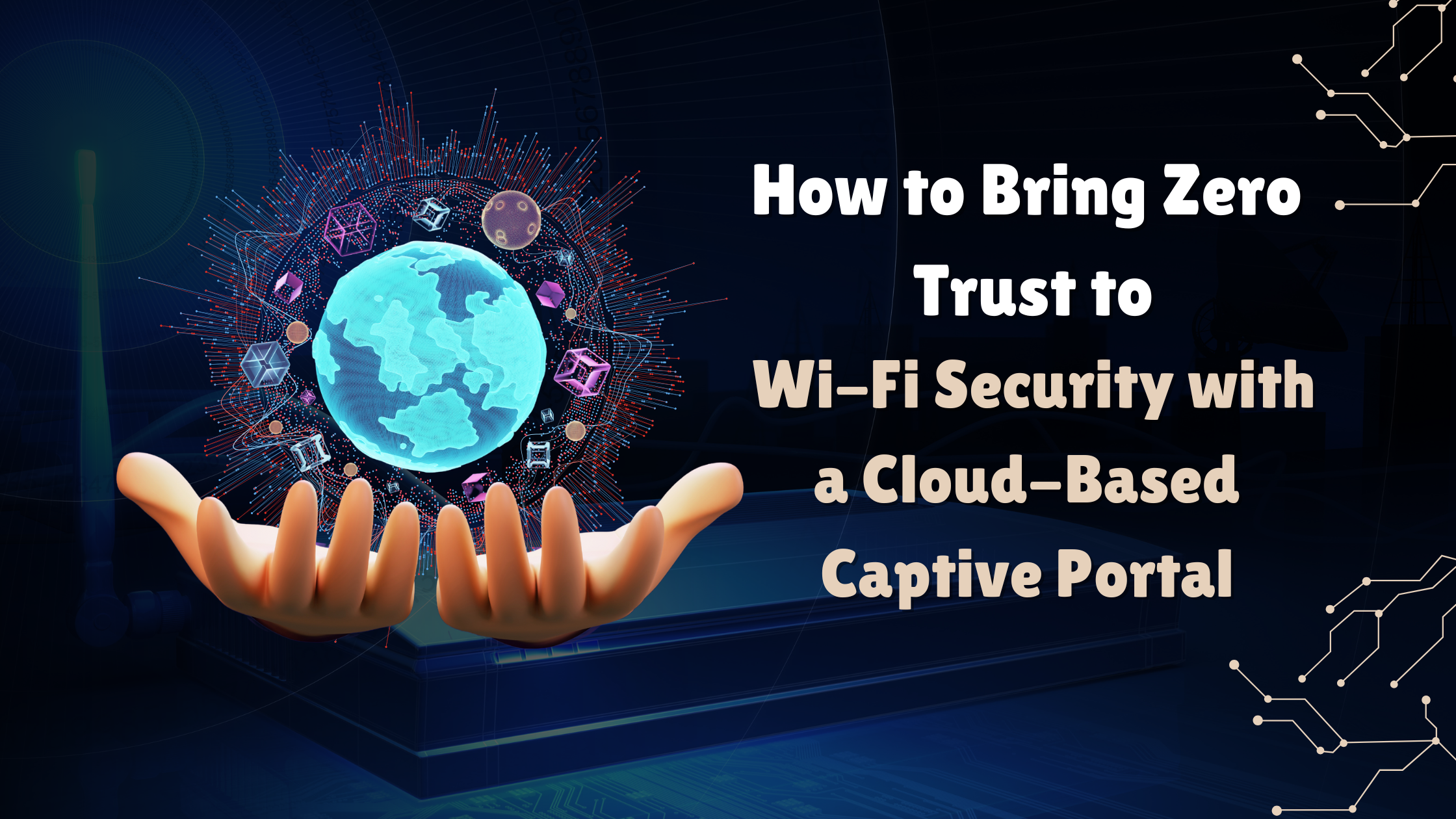How to Bring Zero Trust to Wi-Fi Security with a Cloud-Based Captive Portal
In today’s hyperconnected world, Wi-Fi has become the lifeblood of modern businesses. From corporate offices to coffee shops, the demand for secure and seamless wireless connectivity is universal. However, traditional Wi-Fi security models often fall short in addressing evolving cybersecurity threats. Enter Zero Trust, a security paradigm that assumes no user or device can be trusted by default. When combined with a cloud-based captive portal, Zero Trust transforms Wi-Fi security into a robust, adaptive, and user-friendly solution.
The Challenges of Traditional Wi-Fi Security
Traditional Wi-Fi networks often rely on pre-shared keys (PSKs) or weak authentication protocols, making them susceptible to:
- Unauthorized Access: Once a PSK is leaked, malicious actors can gain easy entry.
- Man-in-the-Middle (MITM) Attacks: Open Wi-Fi networks without encryption allow attackers to intercept sensitive data.
- Device Spoofing: Lack of identity verification makes it easy for attackers to impersonate legitimate devices.
These vulnerabilities necessitate a paradigm shift in how Wi-Fi security is approached. A Zero Trust framework eliminates implicit trust and enforces strict verification at every layer.
What is Zero Trust?
Zero Trust is a cybersecurity model centered on the principle of “never trust, always verify.” Unlike traditional security models that focus on perimeter defenses, Zero Trust assumes that threats can originate both outside and inside the network. Key tenets of Zero Trust include:
- User and Device Authentication: Continuous verification of user identity and device posture.
- Least Privilege Access: Limiting access to only the resources a user or device needs.
- Micro-Segmentation: Breaking the network into smaller zones to contain potential breaches.
The Role of a Cloud-Based Captive Portal
A captive portal acts as the gateway to a Wi-Fi network, requiring users to authenticate before accessing the internet. When cloud-based, this solution becomes even more powerful, enabling dynamic and scalable security controls.
Key Features of Cloud-Based Captive Portals:
- Customizable Authentication: Support for multi-factor authentication (MFA), social logins, or enterprise credentials.
- Real-Time Threat Detection: Integration with cloud security tools to identify and block malicious activities.
- Device Fingerprinting: Collecting detailed information about connecting devices to enforce security policies.
- Remote Management: Administrators can monitor and control access from anywhere, reducing the need for on-site IT staff.
Implementing Zero Trust in Wi-Fi Security with a Captive Portal
Here’s how to bring Zero Trust principles to your Wi-Fi network using a cloud-based captive portal:
- Enforce Strong Authentication:
- Implement MFA to ensure that only authorized users can access the network.
- Leverage identity providers (IdPs) such as Azure AD or Okta for seamless integration.
- Validate Device Posture:
- Use the captive portal to assess the security posture of connecting devices.
- Deny access to devices that lack endpoint protection or have outdated software.
- Segment Network Traffic:
- Configure the portal to assign users and devices to specific VLANs based on their role or risk level.
- Limit access to sensitive resources using least privilege principles.
- Monitor and Respond to Threats:
- Integrate the captive portal with a Security Information and Event Management (SIEM) system.
- Set up alerts for suspicious activities, such as repeated login failures or unusual data usage.
- Simplify Guest Access:
- Provide temporary, restricted access for guests using time-limited credentials.
- Monitor guest activity to prevent misuse of the network.
Benefits of This Approach
By adopting a Zero Trust model with a cloud-based captive portal, organizations can:
- Enhance Security: Reduce the risk of unauthorized access and data breaches.
- Improve User Experience: Offer seamless and secure connectivity without compromising performance.
- Simplify Management: Centralize control and gain visibility into all connected devices.
- Ensure Compliance: Meet regulatory requirements by enforcing strict authentication and access policies.
Conclusion
As cyber threats continue to evolve, businesses must rethink their approach to Wi-Fi security. Integrating Zero Trust principles with a cloud-based captive portal creates a resilient defense against modern threats while ensuring a smooth user experience. It’s time to move beyond traditional security models and embrace a future where trust is earned, not assumed.


